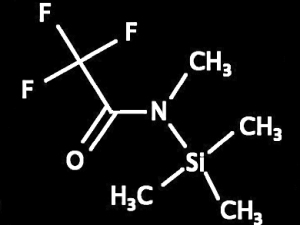Nitriles, also known as Cyano Compounds, are popular organic compounds. Nitriles are a class of organics compounds found in organic chemistry, and usually, the functional group known as the Cyano group (−C ≡ N) and attached to a carbon atom.
How are Nitriles Manufactured?
 There are various methods of manufacturing nitriles. In this article, we shall look at two ways to manufacture nitriles.
There are various methods of manufacturing nitriles. In this article, we shall look at two ways to manufacture nitriles.
Let’s dive in.
First, some nitrile compounds are manufactured by heating carboxylic acids and ammonia in the presence of catalysts. It is the common process used to prepare nitriles from fats and oils – which act as softening agents in various substances such as plastics, textiles, synthetic rubbers, and the making of amines.
Secondly, the other method you can use to manufacture nitriles is heating amides and phosphorus pentoxide compounds.
Nevertheless, you can reduce them to primary amines when you hydrolyze aluminum hydride to a carboxylic acid with the presence of a base or acid. If not, you can even react with aluminum hydride.
What are the Properties of Nitriles?
Here are the properties of these organic compounds:
♦ Nitriles have a boiling point ranging between 82 – 118 °C
♦ Nitriles are colorless solids, while their liquid form has unique odors
♦ Nitriles show a higher polar and electronegativity
♦ Nitriles exhibit strong van der Waals forces and dipole-dipole movements of dispersion between molecules
♦ Nitriles are highly soluble in water. Solubility decreases depending on an increase in the length chain.
Nitriles Reactions
Nitriles have to undergo various reactions in the process. These reactions are as highlighted below:
Hydrolysis
Nitriles have to undergo hydrolysis. During hydrolysis of nitriles, there should be the presence of a base or an acid. The process forms carboxylic acids and carboxamides efficiently.
Reductions
The other process is reduction. This is a process where nitriles will be reduced to form primary and tertiary amines. It does that when treated with aluminum hydride. However, for this process to take place, there should be the presence of catalysts.
Alkylation
Lastly, the other process is referred to as Alkylation. The process changes nitrile compounds to nitrile anions.
What are the Uses of Nitriles?
Nitriles have been used in various industries, including the medical field. Some of the applications are highlighted below:
♦ Nitriles are the essential ingredient in the formation of antidiabetic drugs—these help in treating breast cancers.
♦ Nitriles help in manufacturing nitrile gloves, hoses, and seals. These are resistant to chemicals.
♦ Nitrile has a compound known as pericyazine. This compound helps to treat opiate dependence as antipsychotic.
♦ They are used in the application of low-temperature needs and oil resistance substances
♦ Nitriles are also employed in aircraft systems, automotive systems, and hydraulic hoses
♦ The compound is available in animal and plant sources
Conclusion
Most nitriles are toxic than their corresponding carboxylic acids. That indicates there is an influence of the group. However, in some cases, carboxylic acids will exhibit strong negative effects on diversity or culture growth.
It shows there is a fundamental reason to test the influence of educts or products of enzymatic reactions before to avoid unintended lethal effects when using nitriles.
Shift Frequency © 2021 – A Guide to Nitrile Organic Compounds
